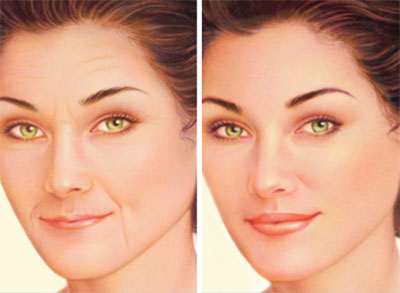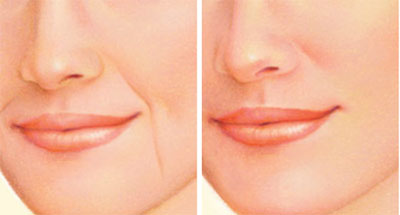Would You Like a Consultation?
Click the button to the right on your mobile phone to be connected with one of our friendly and knowledgeable staff and we will set up an appointment for you!
Enhancing your appearance with soft tissue augmentation
The visible signs of facial aging occur over time as a result of sun exposure, heredity and life style.
One of the earliest signs of aging is a loss of facial fullness and the development of wrinkles. Softening of these facial lines and the restoration of volume and fullness in the face often can be achieved non-surgically with injectable fillers.
If you would like to restore facial contours, or reduce the appearance of lines and creases, injection therapy with soft tissue fillers may be right for you.
Injectable fillers can:
What it won’t do:
Soft tissue augmentation does not stop the aging process. If you wish to change the elements of your face, surgery such as a facelift, brow lift or eye lift may be the answer.
Non-surgical rejuvenation treatments such as injectable fillers cannot achieve the same results, but may help delay the time at which a facelift becomes appropriate.
Is it right for me?
While not as involved as surgical cosmetic procedures, soft tissue augmentation is a medical procedure. You should do it for yourself, not to fulfill someone else’s desires or to try to fit any sort of ideal image. Tissue fillers are a good option for you if:
Collagen is a natural protein that supports the skin. Injectable collagen formulas derived from human dermis include Cosmoderm?Ǭ or Cosmoplast?Ǭ. Zyderm?Ǭ and Zyplast?Ǭ are forms of bovine collagen that, unlike human derived collagen, require prior allergy testing. The results may last 2 to 4 months.
Hyaluronic Acid is a natural substance found in our bodies. It is well suited to plump thin lips and fill facial creases such as nasolabial folds. It may also be appropriate for some surface wrinkles and concave scars. The results may last 6 months or longer.
Hydroxylapatite is a mineral-like compound found naturally in human bones, suspended in a gel-like formulation. It is the heaviest of facial fillers and is recommended to fill deeper creases such as nasolabial folds, marionette lines and frown lines, as well as to enhance fullness of the cheeks and other facial contours.
Human fat, harvested from your own body, can be reinjected to enhance facial fullness, fill deep creases and to build up shallow contours. Fat injection requires a more extensive procedure than other injectable fillers because it uses liposuction techniques to extract the fat prior to injection.
Treatment results last up to a year or more in some cases and are highly variable. (Fat can be stored for your own future treatment. The duration of results from preserved fat is not as favorable as fat used at the same time it is harvested.)
A note about the FDA and injectable fillers: The U.S. Food and Drug Administration reviews and approves pharmaceutical fillers in the same manner as medical devices. However, some fillers may be used on an off-label basis, meaning they are approved medical treatments but not directly reviewed for a specific application. The options discussed in this brochure are among the current fillers preferred by plastic surgeons. Some are available for general use, others are not; regulatory status may be subject to change.
What happens during soft tissue augmentation?
Step 1. Your plastic surgeon will carefully evaluate your facial appearance and skin tone, and examine the areas of your face to be augmented with injectable fillers.
Step 2. Strategic points on your face may be marked as guides to the appropriate injection sites for the filler.
Step 3. The injection sites will be cleansed with an antibacterial agent and icing or a topical numbing agent may be offered to make more sensitive patients comfortable.
In some cases, the filler itself will contain an anesthetic agent. In other cases local anesthetic may be administered to the treatment site.
Step 4. Injection takes only a few moments per site and a few minutes for a course of treatment.
Step 5. Following injection, any markings will be cleansed and icing may be offered to alleviate any temporary, minor discomfort. Makeup may be carefully re-applied so long as care is taken not to apply pressure to the treatment area.
Filling wrinkles or recessed scars involves multiple injections. In some cases where deeper injection of fillers is required, a local anesthetic may be used prior to treatment.
Common sites for deeper tissue fillers are the nasolabial folds and marionette lines, or to enhance fullness in the cheeks.


Soft tissue augmentation of the lips requires multiple injections to distribute the filler for enhanced lip fullness and to raise or define a cupid’s bow or vermillion border.

An improved appearance is visible almost immediately, although minor swelling or bruising may appear at the injection sites.
With some fillers, a slightly “over-filled” appearance may be initially present. These conditions will resolve within a few hours, or at most a few days. The duration may be as long as a few weeks with injection of one’s own harvested fat.
The decision to have soft tissue augmentation is extremely personal and you’ll have to decide if the benefits will achieve your goals and if the risks and potential complications are acceptable.
Your plastic surgeon and/or staff will explain in detail the risks associated with surgery. You will be asked to sign consent forms to ensure that you fully understand the procedure you will undergo and any risks and potential complications.
Complications from fillers are uncommon.
The risks vary depending on the specific filler used and the relative permanence of the filler substance and include:
Fillers derived from non-human sources may require a pre-treatment allergy test
Infection at the injection site
Fillers that are not completely fluid and contain microscopic granular substances carry a risk of “clumping” as a result of facial movement and the natural aging process. Over time, these can result in lumps or nodules that may require surgery to treat
Acne-like skin eruptions
Antibodies to filler material may reduce the effectiveness of future injections
Asymmetry
Bleeding, bruising and swelling
Filler material may migrate from the original site and produce temporary paralysis of other muscle groups or other unintended effects
Skin might die (skin necrosis)
Skin rash, itching and swelling
Skin redness
Skin sensitivity
Under or over correction of wrinkles
Choose a professional. Although tissue augmentation is a quick, in-office procedure that can produce a marked improvement in restoring facial fullness and a more youthful appearance, effective and safe use requires a physician with specialized training and a thorough understanding of facial anatomy to recommend and inject an appropriate filler.
Choosing a plastic surgeon to treat your face with injectable fillers means that your treatment will be performed by someone who not only has training in injection therapy, but in all types of non-surgical and surgical facial rejuvenation.
Be sure to ask questions: It’s very important to ask your plastic surgeon questions about your tissue filler procedure. It’s natural to feel some anxiety, whether it’s excitement for your anticipated new look or a bit of preoperative stress. Don’t be shy about discussing these feelings with your plastic surgeon.
The results of soft tissue augmentation using injectable fillers are apparent immediately. Your initial appearance after treatment with any filler may include:
These conditions can be alleviated with topical icing and will improve within a matter of hours or just a few days.
Where fat is the injected filler, these conditions may persist for a few weeks.
The results of soft tissue augmentation with injectable fillers are not permanent, even though a filler substance may be considered permanent. The continued aging of your face and variables in the absorption of fillers will affect how long your results last.
Should you choose not to repeat treatment, your appearance will return to its original condition. Plumped lips will lose volume and improved wrinkles, creases and scars will visibly recess and fully reappear in time.
The results of permanent fillers can change over time; as you age naturally, these fillers may shift or clump.
Surgical removal may be necessary to correct these conditions and could result in visible changes in appearance and noticeable changes in the texture of soft tissue.
Your initial treatment will include a complete consultation. Subsequent follow-up procedures may take only a few minutes, as the full process of consultation is not necessary to repeat, although consent is required at each visit.
Cost is always a consideration in elective surgery. Prices for injectable fillers can vary widely. A surgeon’s cost may vary based on his or her experience as well as geographic office location.
Many plastic surgeons offer patient financing plans, so be sure to ask.
Cost may include:
Your satisfaction involves more than a fee
When choosing a plastic surgeon for soft tissue augmentation, remember that the surgeon’s experience and your comfort with him or her are just as important as the final cost of the surgery.
Most health insurance does not cover cosmetic surgery or its complications.
Click the button to the right on your mobile phone to be connected with one of our friendly and knowledgeable staff and we will set up an appointment for you!